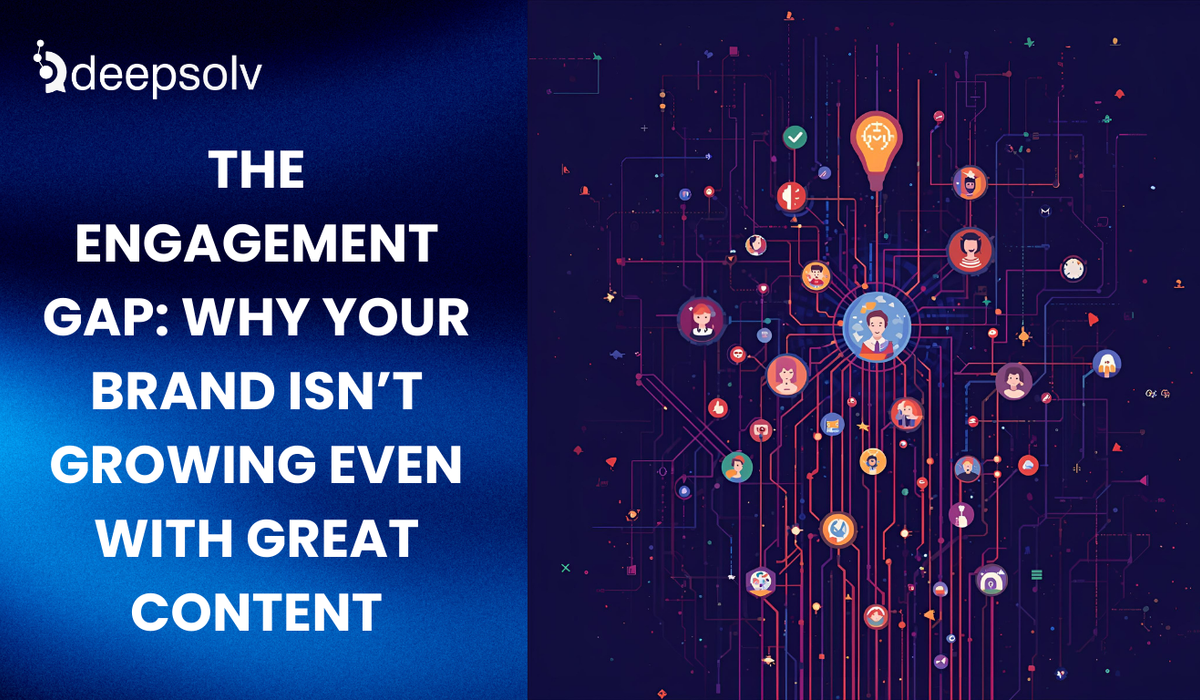How to Create and Track Social Media Benchmarks in 2025
6 min read
Published: 6/14/2025
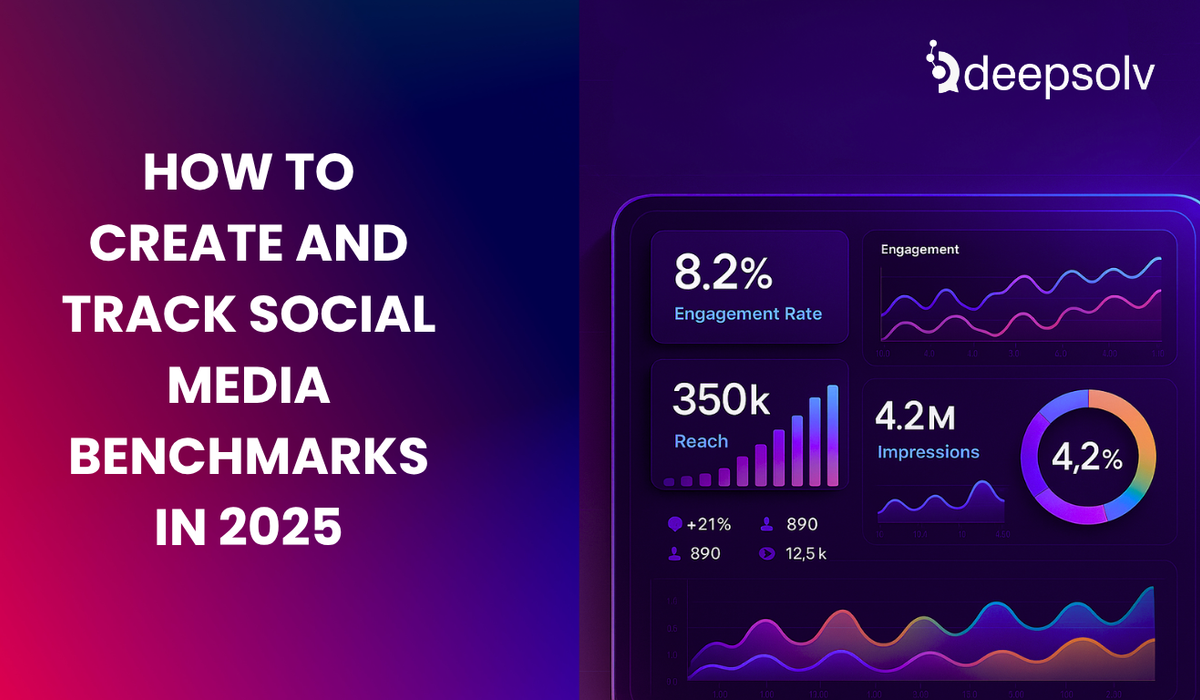
What Are Social Media Benchmarks and Why They Matter
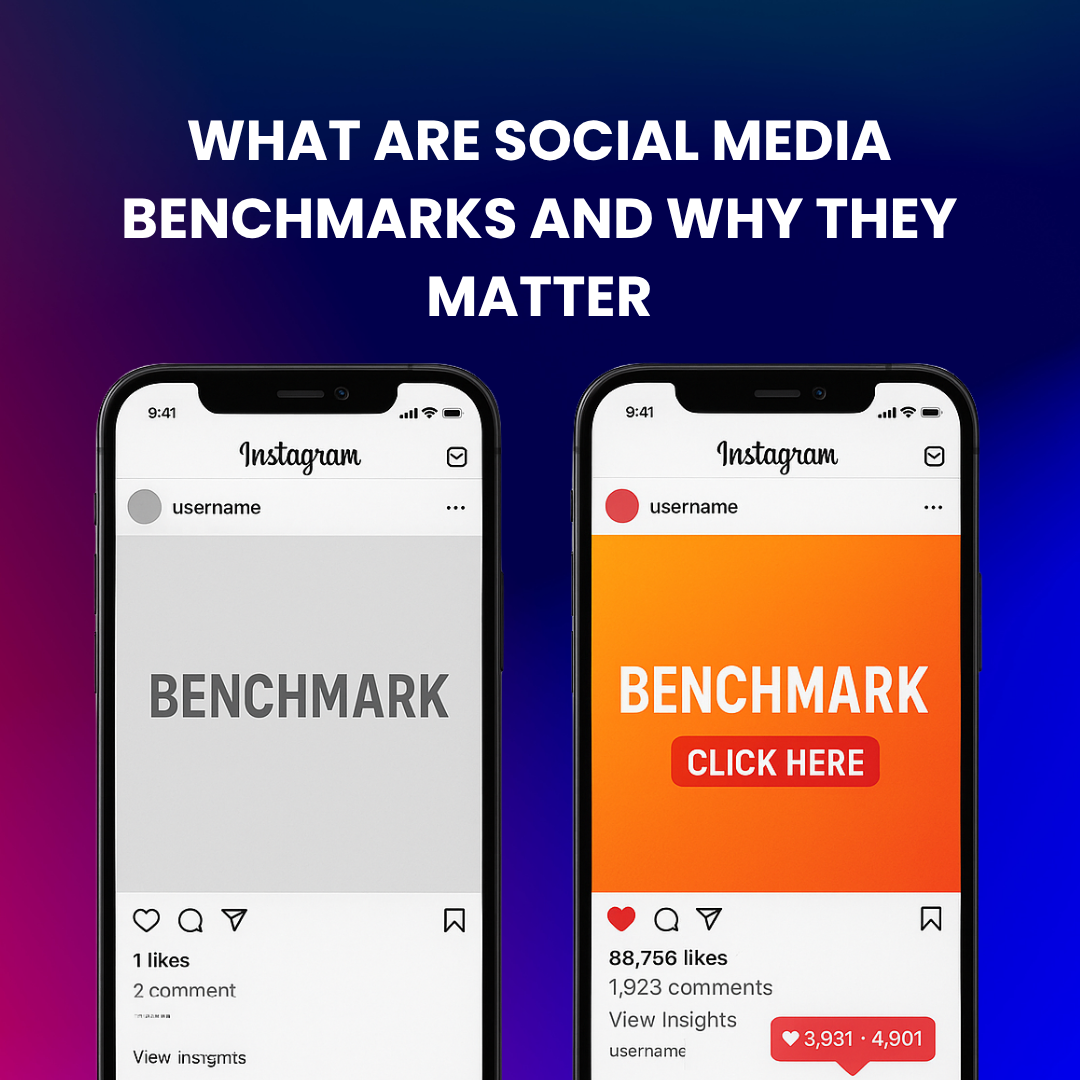
Social media benchmarks are standard performance metrics (e.g. engagement rate, follower growth, reach) that help brands measure how they stack up against others in their industry. These benchmarks provide essential context — without them, raw numbers lack meaning.
Let’s say your Instagram Reels get 1.2% engagement. That sounds good, right? But if your industry average is 2.4%, you’re actually underperforming. Benchmarks offer a clear picture of where you are, and where you can grow.
More importantly, benchmarks help you:
- Set realistic, data-driven goals
- Avoid content burnout by aligning effort to outcomes
- Track progress against industry shifts and algorithm updates
Setting Personalized Benchmarks in 2025

To create meaningful benchmarks, combine three sources of data:
- Your Brand History – Look at your performance over the past 6–12 months. Track engagement rate, reach, impressions, and follower growth per platform. Use native platform insights and downloadable reports.
- Competitor Analysis – Pick 3–5 brands similar to yours. Study their post frequency, format choices (e.g., Reels, Carousels), and engagement levels. For instance, a small sustainable beauty brand like Bybi consistently posts Reels with behind-the-scenes footage and gets 1–1.5% engagement- significantly above average for their niche. These patterns offer guidance on what’s working in your vertical.
- Industry Standards – Use publicly available benchmark reports, analytics blogs, and platform updates to understand what “average” looks like across verticals and platforms. While industry-wide tools are limited due to data privacy, general research still gives directional insight.
Each quarter, revisit your benchmarks. Adjust based on algorithm shifts, campaign goals, or seasonality (e.g., Q4 might see higher ad spend and lower organic engagement).
2025 Social Media Benchmark Snapshot
Here’s a snapshot of platform-specific metrics to benchmark your performance this year:
| Metric / Platform | TikTok | YouTube Shorts | |||
| Avg. Engagement Rate | ~0.50% | ~3.85% | ~5.00% | ~1–2% | ~5.9% |
| Top Content Format | Carousels (0.55%) | UGC Videos | Multi-image (6.6%) | Video/live | Vertical Shorts |
| Follower Growth (Small vs. Large) | +38% vs +27% YoY | +269% vs +33% YoY | +40.8% vs +21.6% YoY | Varies by vertical | No fixed average |
| Avg. Posts per Month | ~20 (5/week) | ~15 (larger brands) | ~12–16 | ~10–14 | ~8–12 |
Note: Engagement rates vary based on calculation method (e.g., per impression vs per follower). Use consistent formulas when comparing.
How to Set Social Media Benchmarks Step-by-Step
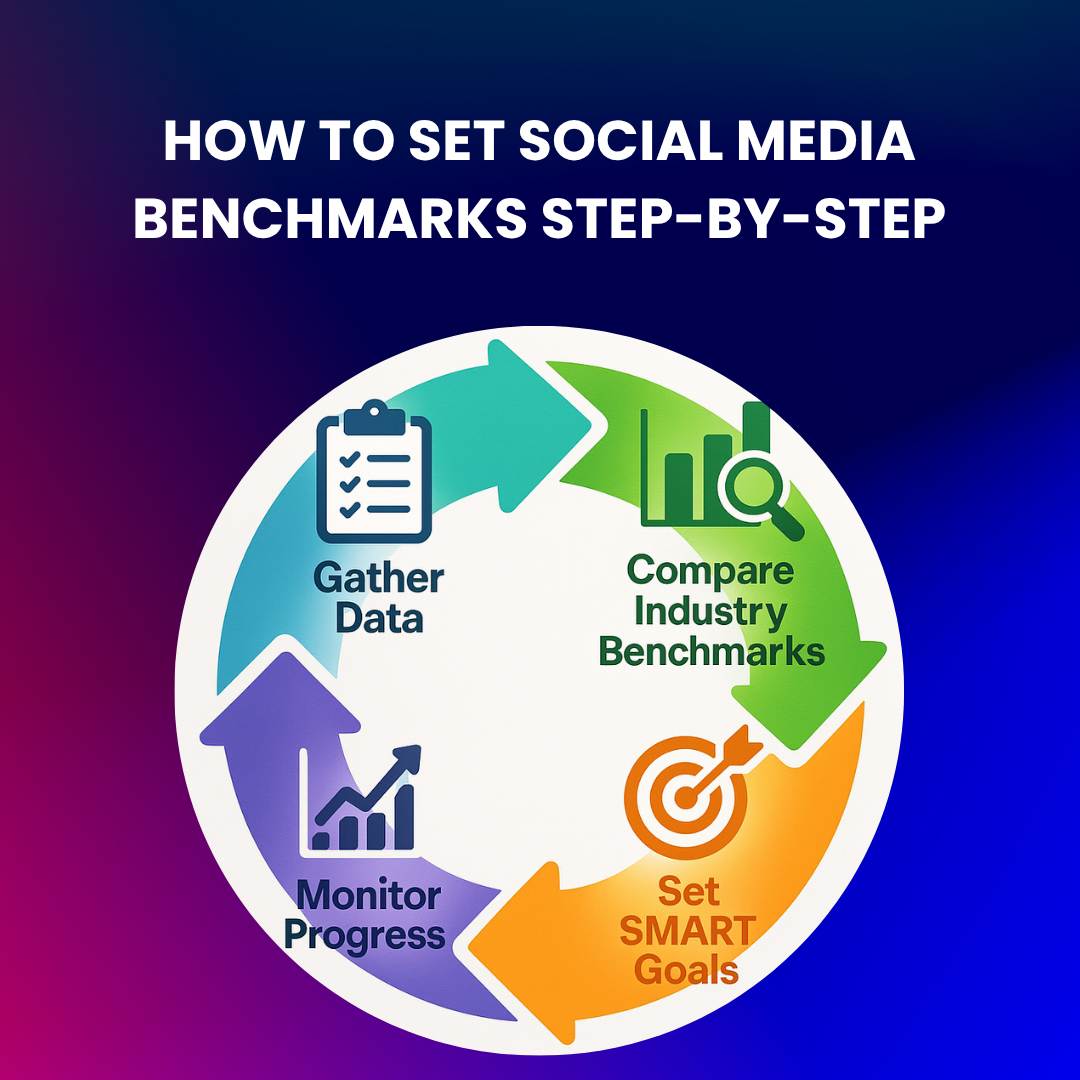
1. Gather Your Data
Export your last 6–12 months of social data: average post engagement, reach, follower growth, and impressions by format (e.g., carousel, story, video). Start platform by platform.
2. Choose Relevant Industry Benchmarks
Match your brand category (e.g., fashion, wellness, SaaS) with publicly shared reports or visible brand performance. Avoid random comparisons- relevance matters. Benchmark against brands of similar size and audience.
3. Define SMART Goals
Turn benchmark data into Specific, Measurable, Achievable, Relevant, and Time-bound targets. For example:
- "Increase LinkedIn document post engagement from 4.5% to 6% by Q3."
- "Grow Instagram followers by 10% in the next 60 days."
4. Implement and Track
Test content formats aligned with your benchmark strategy. For instance, if competitor Reels outperform carousels, adjust your ratio. Monthly, track results to compare against your goals.
Pro Tip: Strong community engagement is often the key to surpassing industry benchmarks. Deepsolv’s AI automates replies to DMs and comments in your unique brand voice, ensuring fast, authentic engagement that boosts both trust and conversions. No missed leads. No hours spent manually responding. Just smart, scalable interaction that actually moves the needle.
Learn more about it here.
Benchmarks by Industry and Role

Benchmarks can vary widely depending on your sector and whether you're a brand or creator.
- E-commerce brands may see stronger returns on Reels or influencer collaborations.
- B2B brands often perform better on LinkedIn, with carousel documents or industry commentary driving higher engagement.
- Creators and influencers might focus more on saves, shares, and comments, rather than reach alone.
- NGOs or cause-driven brands might expect lower follower growth, but higher message resonance and shares.
Always calibrate your benchmarks with the business model and audience expectations in mind.
Reporting and Refining Benchmarks Monthly
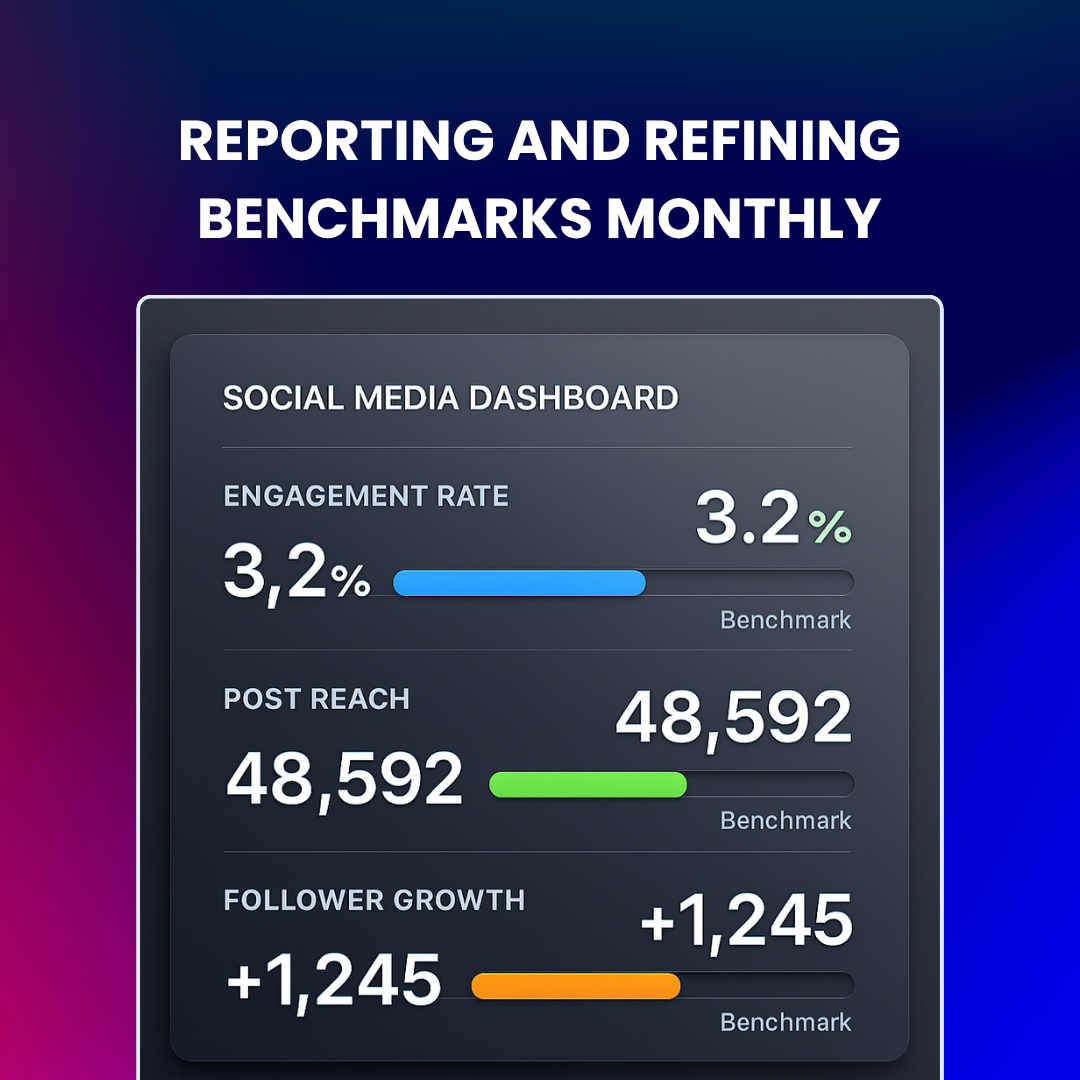
Benchmarks shouldn’t gather dust- they should evolve with your brand.
Build a Mini Dashboard
Use Google Sheets or Notion to create a monthly tracker. Include:
- Engagement vs. benchmark
- Reach vs. benchmark
- Format breakdowns (e.g., carousels vs. Reels)
- Growth trends
Analyze Trends and Gaps
Ask:
- Did my engagement spike during a campaign?
- Are certain formats underperforming industry norms?
- Is audience growth aligned with content changes?
Adjust Tactics
Let’s say you aimed for 0.6% Instagram engagement but averaged 0.42% for 2 months. Rather than panic, refine. Maybe your hook isn’t strong enough or your CTA is too soft. Test carousel cover designs or post timing.
Visualize the Gap
Simple visuals help when reporting to founders or marketing teams. A line graph showing benchmark vs. brand growth makes trends visible at a glance.
Real-World Application: Bybi Beauty’s Instagram Strategy

UK-based sustainable beauty brand Bybi grew its Instagram following steadily over 2024 by:
- Prioritizing reels with skincare education
- Collaborating with nano-influencers who shared user-generated content
- Keeping a clean, aesthetic-first grid
Although they don’t post daily, their follower engagement stayed consistent (~1.2%), which is over 2x the industry average for similar-sized beauty brands.
Tracking those patterns allowed them to maintain efficiency- fewer posts, better results. That’s a benchmark mindset.
Final Takeaway: Benchmark to Grow Smarter
Benchmarks aren’t static goals- they’re dynamic guardrails. In 2025’s content landscape, smart benchmarking lets you focus on what works, cut what doesn’t, and scale with confidence.
One of the most critical ways to exceed industry benchmarks is by optimizing your engagement and that’s where Deepsolv shines. Its AI-powered automation ensures your replies, comments, and DMs feel brand-authentic, fast, and personalized at scale. Consumers feel seen. Conversations convert. No more hours lost in manual replies — just smarter, scalable community management.
Ready to stop comparing blindly and start benchmarking smartly? Book a free strategy call with Deepsolv and get a tailored snapshot of how your brand stacks up and where it could lead next.
FAQs
Frequently asked questions related to this blog post

